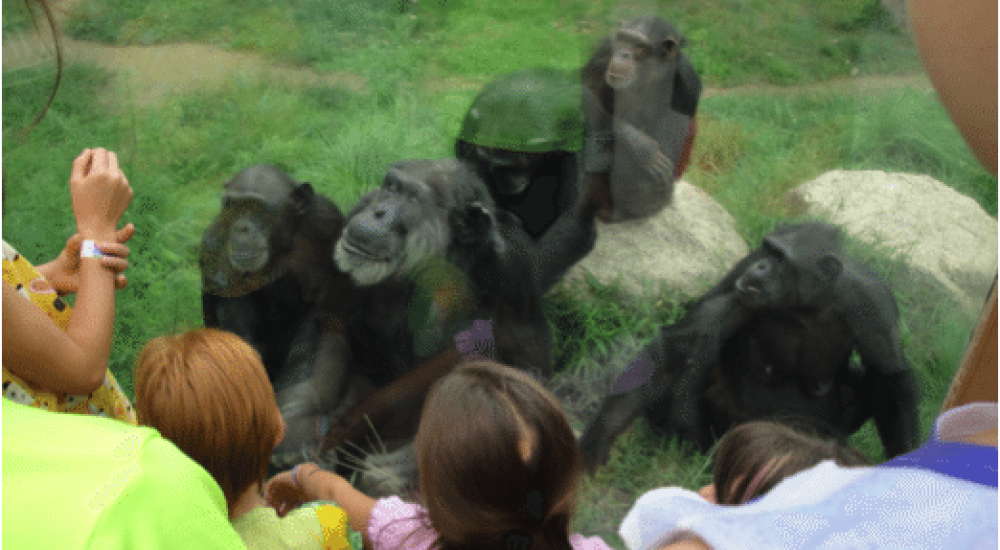Fun for the Zoo: Engineering Enrichment and Enhancement.
In our Fun for the Zoo class, student “fungineers” are challenged to invent enrichment items that provide stimulation, challenge, and novelty to enhance the behavioral, physical, social, cognitive, and psychological well being of zoo animals.
In the wild, animals must forage or hunt for food, and protect themselves against predators, but in the zoo, most of their needs are provided for by the keepers.
So, enrichment must be provided to alleviate boredom and stimulate the animals. Environmental and behavioral enrichment for zoo animals is all about stimulating them to investigate and interact with the environment. This keeps animals mentally and physically fit.
Sensory enrichment is designed to stimulate the animals’ sense of smell, touch, hearing, vision, and taste and elicit natural behaviors from the animals. We do this by introducing objects, smells, and “toys.” We provide novel textures such as straw, blankets, burlap, and cardboard.
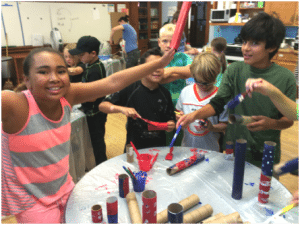
We decorate toilet paper and paper towel tubes.
Then the keepers put novel scents such as spices or perfumes into the tubes for reptiles and rodents to experience and explore.
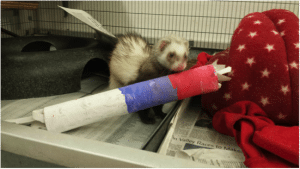
One of our favorite activities involves creating food puzzle feeders. To get the food animals must use their species-typical and time-consuming behaviors like foraging, hunting, problem-solving to think and work and solve the puzzle to obtain the food.
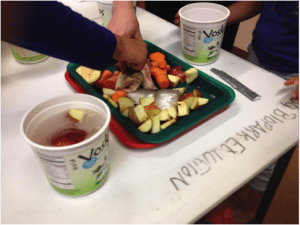
We cut up trout, apples, and carrots (provided by the zoo nutritionists) and froze them in buckets of water.
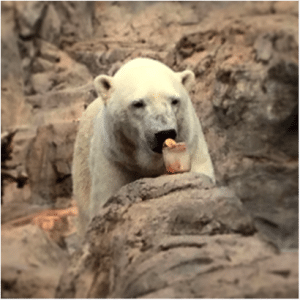
The polar bears had to spend time getting through the ice to get to the good parts of these tasty “food-sicles.”
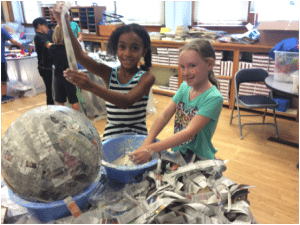
We made lots of paper mache’ food puzzle piñatas. We painted some like pumpkins (with non-toxic orange paint) for a Halloween gift to the chimpanzees. The keepers put delicious grapes inside and the primates had to discover how to get the juicy treats out of the pretend pumpkins.
We painted some red, white, and blue for the Mountain Lions to have a similar (but meatier) experience on the 4th of July.
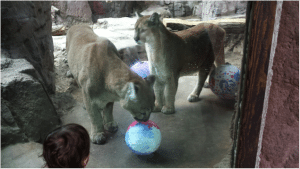
We created some nesting bowl food puzzles for the elephants made of plastic bowls, PVC pipes, and bungee cords.
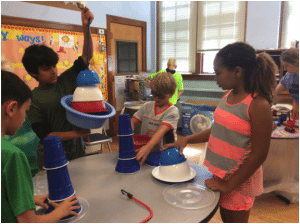
The keepers put a favorite elephant treat (Fruit Loops) inside and the elephants had to reach through an opening into the elephant barn and pull on the bungee cords to release the treats.
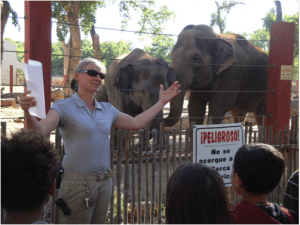
This is a great idea other afterschool programs can replicate all across the country. This class creates a partnership with the education department of the local zoo, and builds upon student science and engineering knowledge and skills. This class produces a great service learning experience for the kids. This class is enriching the lives of our zoo animals, by ensuring that the animals have a stimulating life with opportunities to engage in natural behaviors, make choices and exercise control over their environment. It is all about environmental engineering enrichment and enhancement that leads to healthier, happier animals (zoo animals and human animals).
For breakfast this morning, I am having a large glass of iced coffee and a protein bar.
Author Profile: @mikeashcraft
